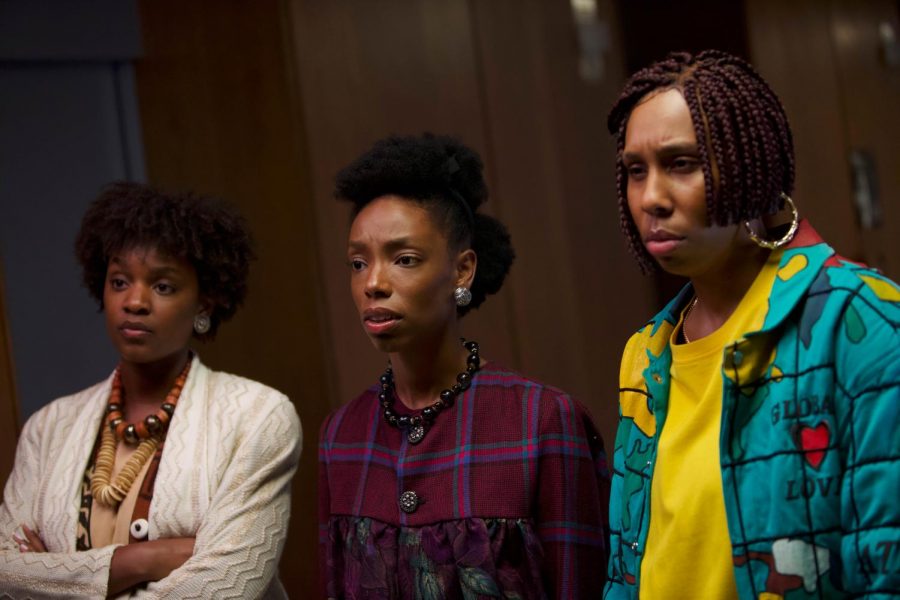‘Bad Hair’ Reimagines a Past Era of Cinema at Sundance 2020
Yaani King Mondschein, Elle Lorraine, and Lena Waithe appears in Bad Hair by Justin Simien, an official selection of the Midnight program at the 2020 Sundance Film Festival. (Courtesy of Sundance Institute)
January 26, 2020
Warning: Contains minor spoilers for “Bad Hair”
1989, Los Angeles, a young black woman compromises her image in order to get ahead in the entertainment industry. So begins “Bad Hair,” a 2020 Sundance Film Festival feature film from the incredible mind of Justin Simien. By the end, this highly nontraditional movie draws together horror, comedy, the surreal and the tensions of being black in a white-washed world.
Simien first made waves when he premiered his film “Dear White People” at Sundance in 2014. In both of these films, he addresses themes of race and inequality from the perspective of black populations, and yet these two films could not be more different. While “Dear White People” is a comedy-drama about Ivy League students, “Bad Hair” — according to Simien — takes inspiration from hair horror films like “The Wig” from Korea or “Exte” from Japan.
Briefly — and without giving away too much of the plot — “Bad Hair” is all about a powerful, malevolent weave. Anna, the film’s protagonist portrayed by the rising star Elle Lorraine, works with an entertainment channel and adopts the new hair under pressure from the white leadership. The threat posed by the hair isn’t immediately clear, but the situation quickly grows out of hand as Anna’s peers — played by the incredible Lena Waithe and Yaani King Mondschein — are also forced to conform. The film stars other big names like Laverne Cox, Jay Pharoah and Vanessa Williams.
The techniques used in filming “Bad Hair” lend another layer to what makes it such an experience. The entire movie was shot on film — a venture Simien has been interested in since “Dear White People”. Most of the soundtrack is original and written by Simien himself, and it was recorded only using equipment that was available in 1989.
Effects were a mixed bag of digital and practical techniques. Without much of a history of hair horror in the American film industry, the film crew had to create many of their own techniques for the practical effects in the film. Simien cited as inspiration many iconic “white” horror films from those late decades in the twentieth century — like “Vertigo,” “Rosemary’s Baby,” “The Wicker Man” and “Little Shop of Horrors” (for more of that horror-comedy feel). Ultimately, he sought to create his idea of what “black film” might have looked like in that same era, had black directors like Simien and others been given the opportunities that they have today. In that, “Bad Hair” is exceptionally successful and leaves the viewer wanting for more of this new, highly exclusive genre.
In a golden age of incredible film, “Bad Hair” feels more like an experimental project from Simien than his magnum opus. It contains a wildly clever plot, perfectly placed humor, some genuinely terrifying moments and an amazing cast. But, at the same time, the film starts a little awkwardly, some of the plot points seem unnecessary or under-explained, and the overall style often wavers confusingly between classic horror and more modern cinema.
Overall, I would give it an 8.5 out of 10 and recommend it to any lover of clever or inventive cinema. Expect Simien to be a powerful and influential director in the years to come.








